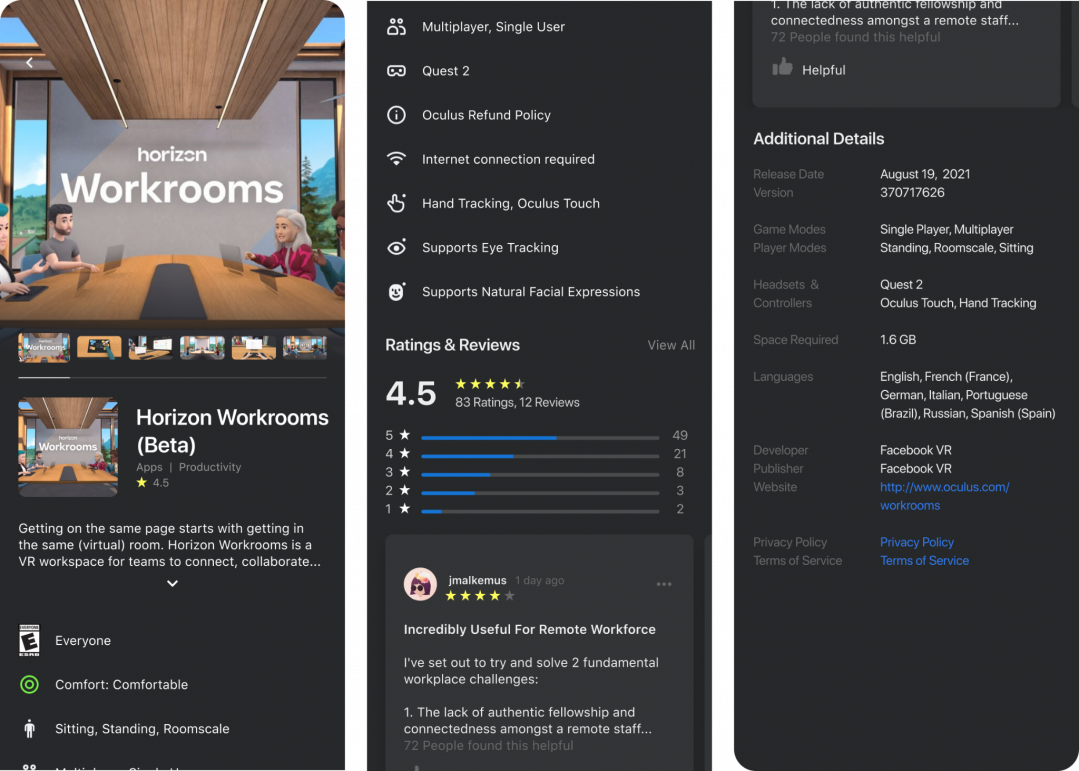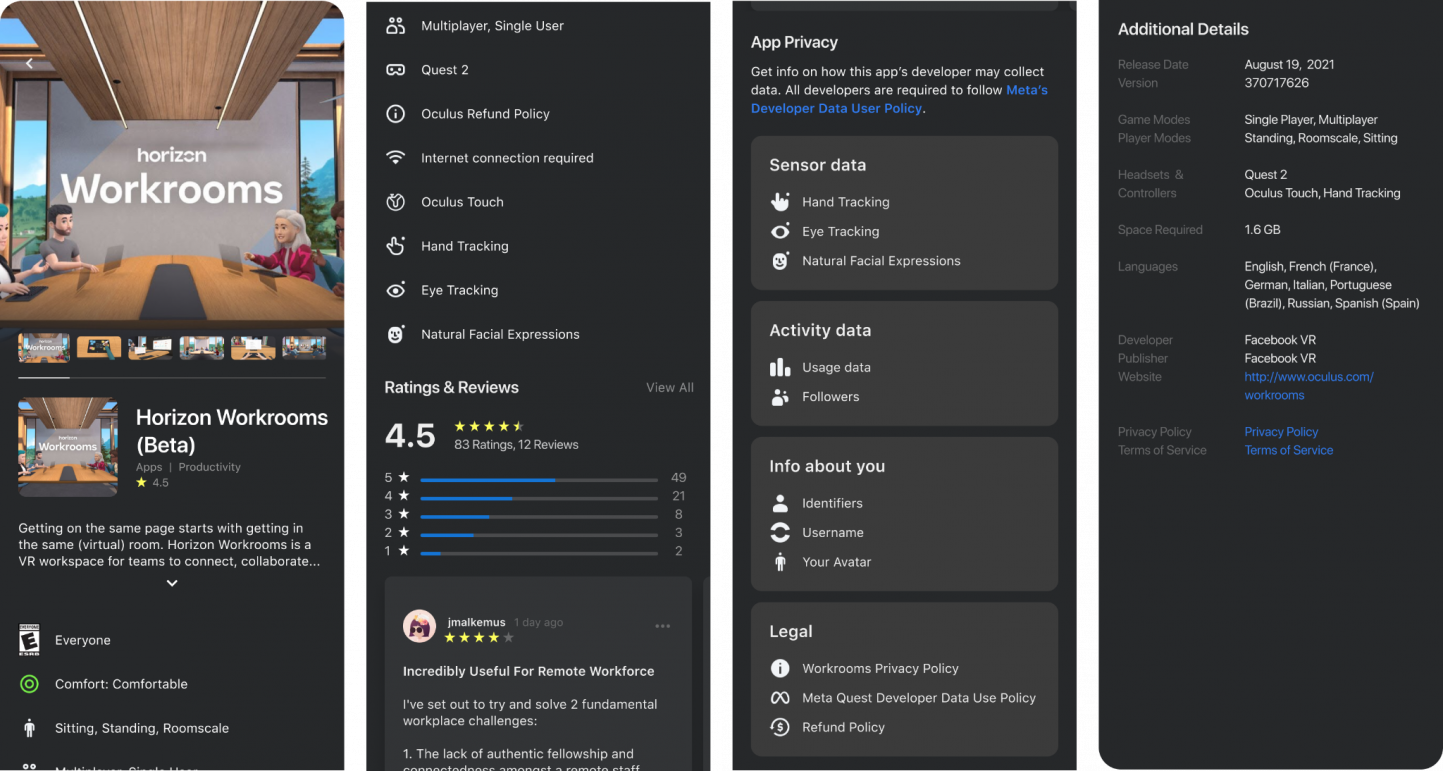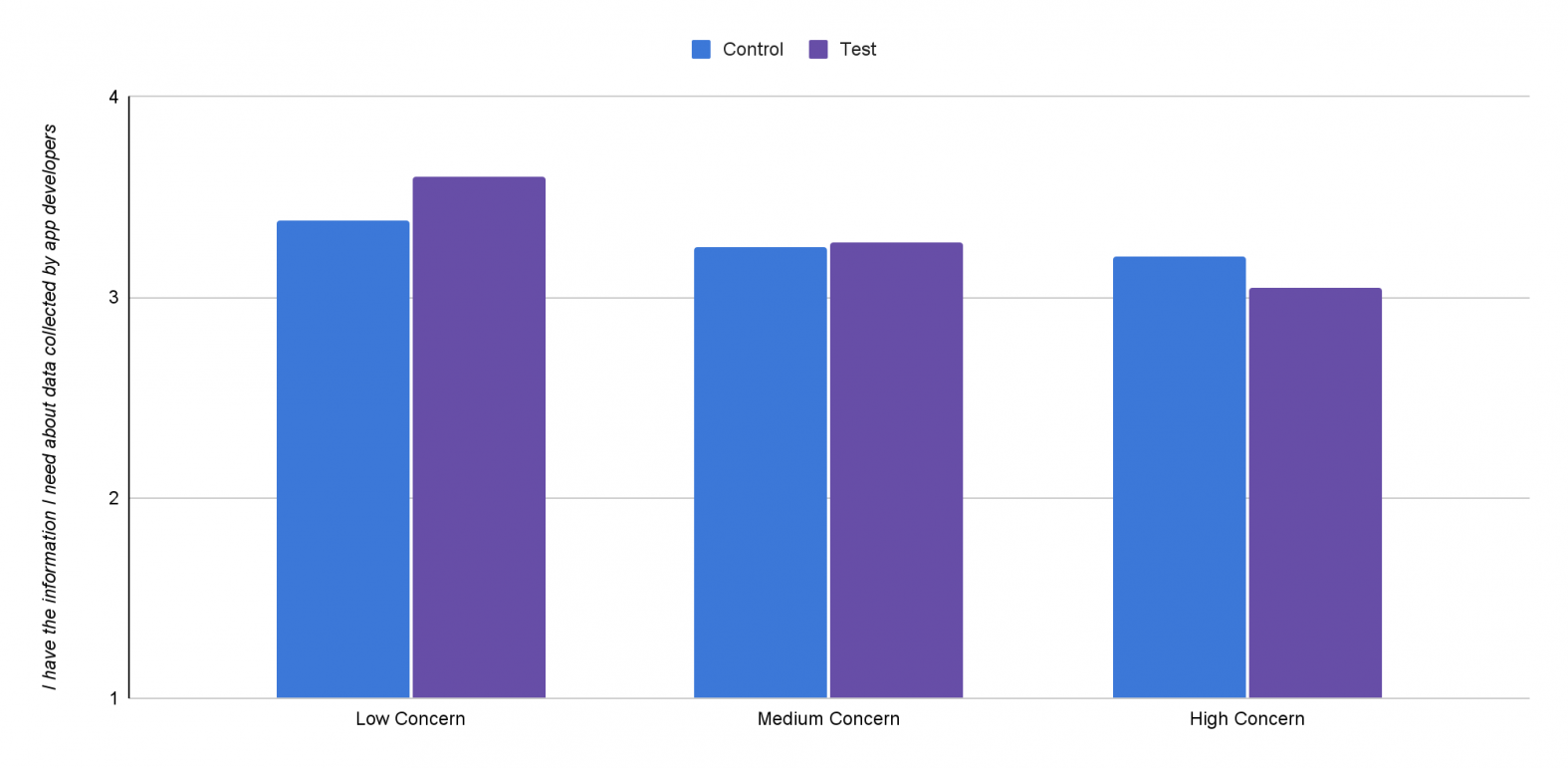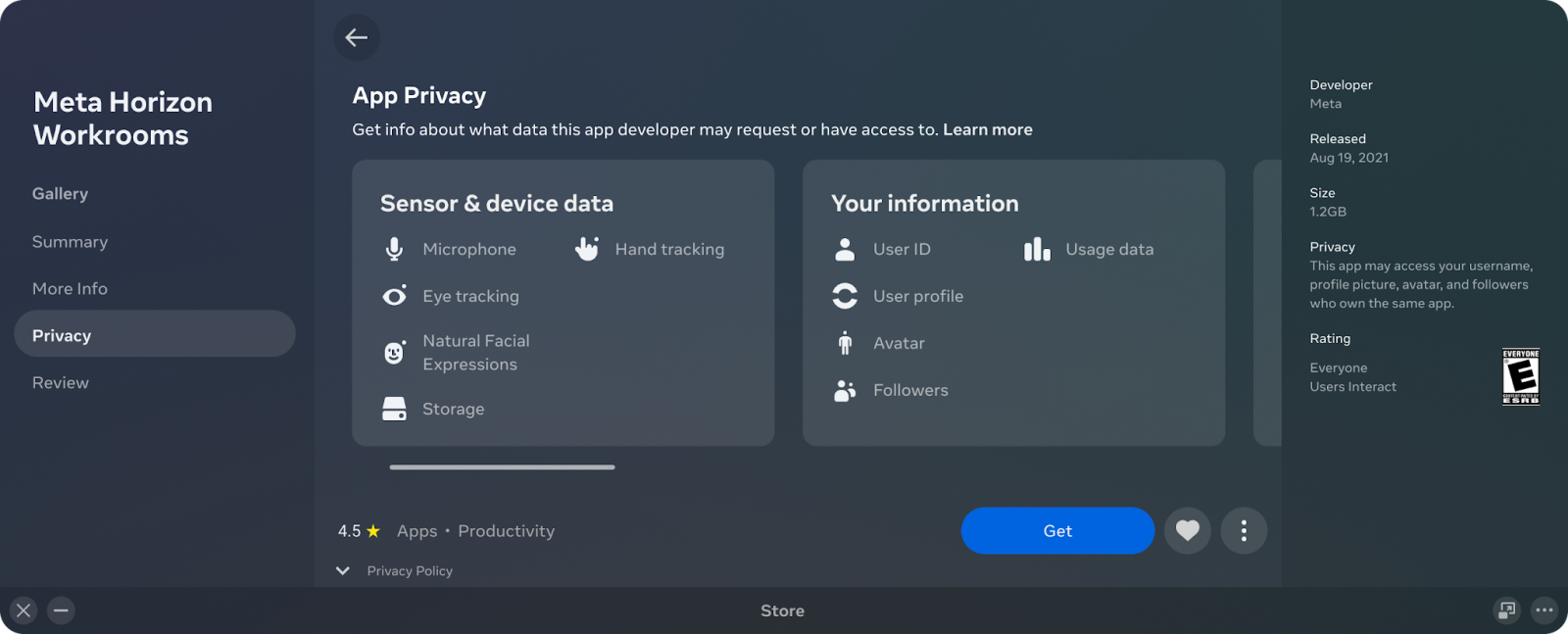Publication date: 23 June, 2025
Author’s note: Product teams at Meta rely on research along with other external factors to design and build products. The contributors to this project and related insights include (in alphabetical order): Bryce Brown, Briana Feng, Phil Kimura-Thollander, Maeleeke Lavan, Emily Straubel, Raleigh Upshur, Breian Witts, and Yue Zhuang.
Abstract
We wanted to understand if introducing data transparency in the product details page of the Meta Horizon app store increases Meta Quest users’ confidence that the app store gives them information they need about data collected by apps (“privacy response-efficacy”) and influences their app download decisions.
Research showed that user respondents who were exposed to transparency designs reported higher privacy response-efficacy than a control group, but only if they had not already developed a concern about data collection by apps.
Tests at feature launch showed that the transparency feature increased download of apps that collected eye tracking and face tracking data among Meta Quest Pro users.
Report
Virtual Reality (VR) headsets collect and use data, like eye tracking and face tracking, to enable apps and games on their platform to function. Some people may perceive the collection and use of this data as a reason to avoid using these apps/games (Menon et al., 2024). Our prior research suggests that experiences designed to address these concerns can build “response-efficacy,” people’s confidence that the product will effectively address their perceived problems, which may unlock use of VR products (Menon et al., 2024).
We wanted to test this research insight by building a privacy product experience in VR devices and exploring its impact on users’ privacy efficacy and behavior. The Meta Horizon app store lends itself to this exploration because it is a product context where greater transparency about data collected by apps may reassure VR users that their data collection concerns are being addressed which may facilitate app download decisions.
Research
We invited Meta Quest users to take a survey in the Meta Horizon app. We used random assignment so that half the respondents saw a ‘control’ experience and the other half saw a ‘test’ experience. The control group viewed a static screenshot of the Horizon Workrooms app in the app store in their survey.

The test group viewed a static screenshot of the same Horizon Workrooms app, but this included an App Privacy section that had information about sensor data, activity data, and info about the user collected by the app.

After viewing their assigned experience, all respondents answered the same survey questions measuring privacy response-efficacy and data collection concern (concern about data collection by app developers). See details in the Appendix.
We expected that viewing the App Privacy section would increase privacy response-efficacy, but we weren’t certain if the designs would be more or less impactful when respondents also expressed concerns about perceived data collection by apps -- that was an exploratory question.
Overall, the test group did not differ from the control group on privacy response-efficacy. But, results depended on the extent to which respondents held negative attitudes about data collection by apps. Respondents in the test group reported higher scores on privacy response-efficacy if they had “low” levels of concern (‘not at all concerned’ and ‘slightly concerned’) about data collection by apps. As respondents’ data collection concern increased from low to “medium” (‘moderately concerned’) and “high” (‘very concerned’ and ‘extremely concerned’) levels, the positive impact of viewing the App Privacy section on respondents’ response-efficacy progressively reduced. This means that viewing the new App Privacy section increased respondents’ confidence that they have the information they need only when they were not at all or slightly concerned about data collected by apps. See additional details in the Appendix.

Product Test
The product team built the App Privacy tab in the Meta Horizon app store (in-headset, mobile app, and web). As can be seen in the image below, the feature added an App Privacy section to each app/game which informed users about what kinds of data an app’s developer may request or have access to.

We monitored the impact of this new experience on usage by creating a control group that did not have access to the feature for a short period. Users were either shown the Meta Horizon app store Product Details Page including the expanded privacy section (“test” group), or one with the default privacy disclosures (“control” group). The test was conducted soon after the launch of Meta Quest Pro, an advanced VR headset that supports experiences that may use eye tracking and face tracking data. For additional details on the test method see the Appendix.
Users were highly engaged with the new experience during the test period, as approximately 79% of users who had access entered the App Privacy section at least once. The feature had a neutral impact on key product metrics overall. However, transparency was highly relevant to Meta Quest Pro users’ download of apps that collected eye tracking (gross payments in the test group were 630% of the control group) and face tracking data (test group’s payments were 797% of the control). The finding implies that transparency about data types that may be perceived as more sensitive can have a positive impact on app downloads.
Open Questions
It is unclear why data transparency increased privacy efficacy only for respondents who did not have strong concerns about data collection. Future research can explore how different amounts of transparency may be more or less effective at building privacy response-efficacy for those with and without strong concerns.
The product test shows that in some contexts (e.g., when considering use of apps that may collect data perceived to be sensitive) data transparency can facilitate app download decisions. Future experiments can explore the behavioral impact of transparency in different product contexts.
Conclusion
Taken together, these findings highlight the nuanced ways in which transparency can be reassuring and can facilitate relevant decisions for certain users and in specific contexts. This can help technology companies understand how privacy and trust play a critical role in people’s relationship with, and use of, new technology like VR products.
